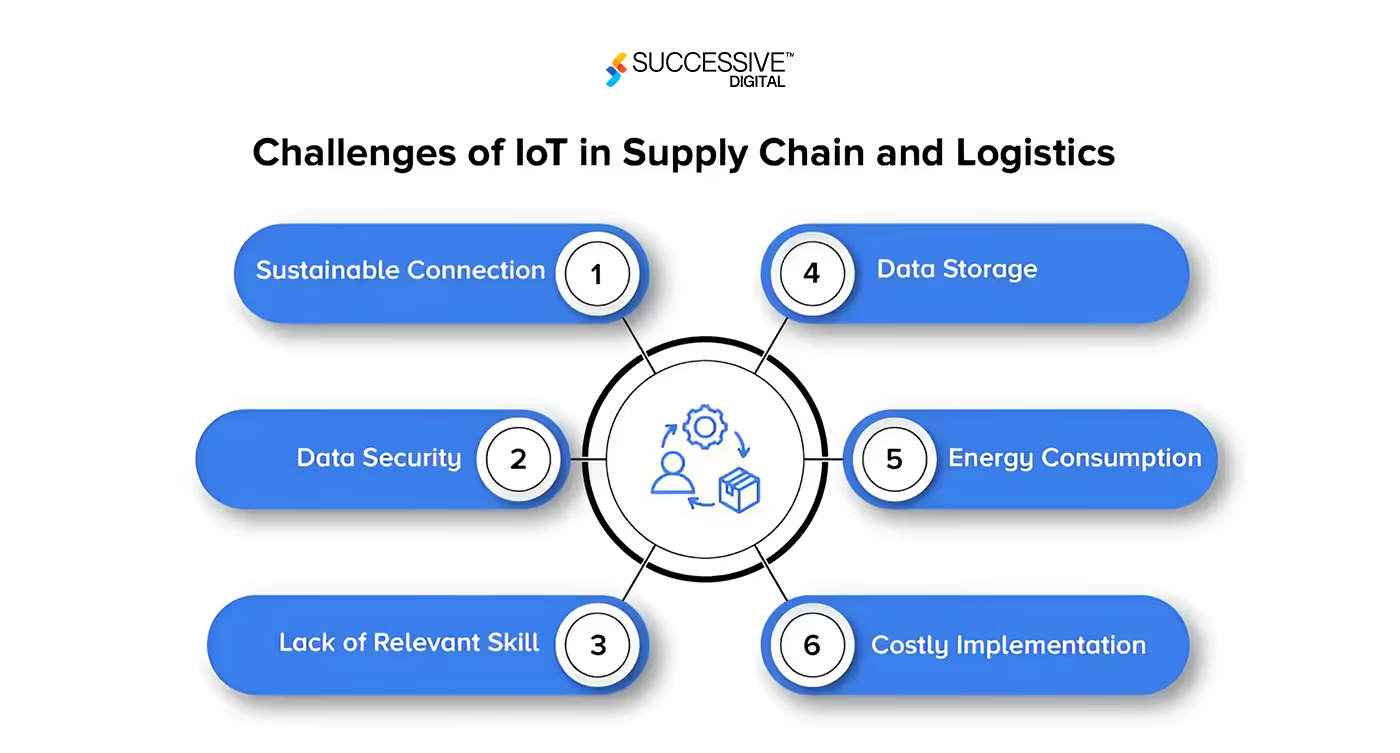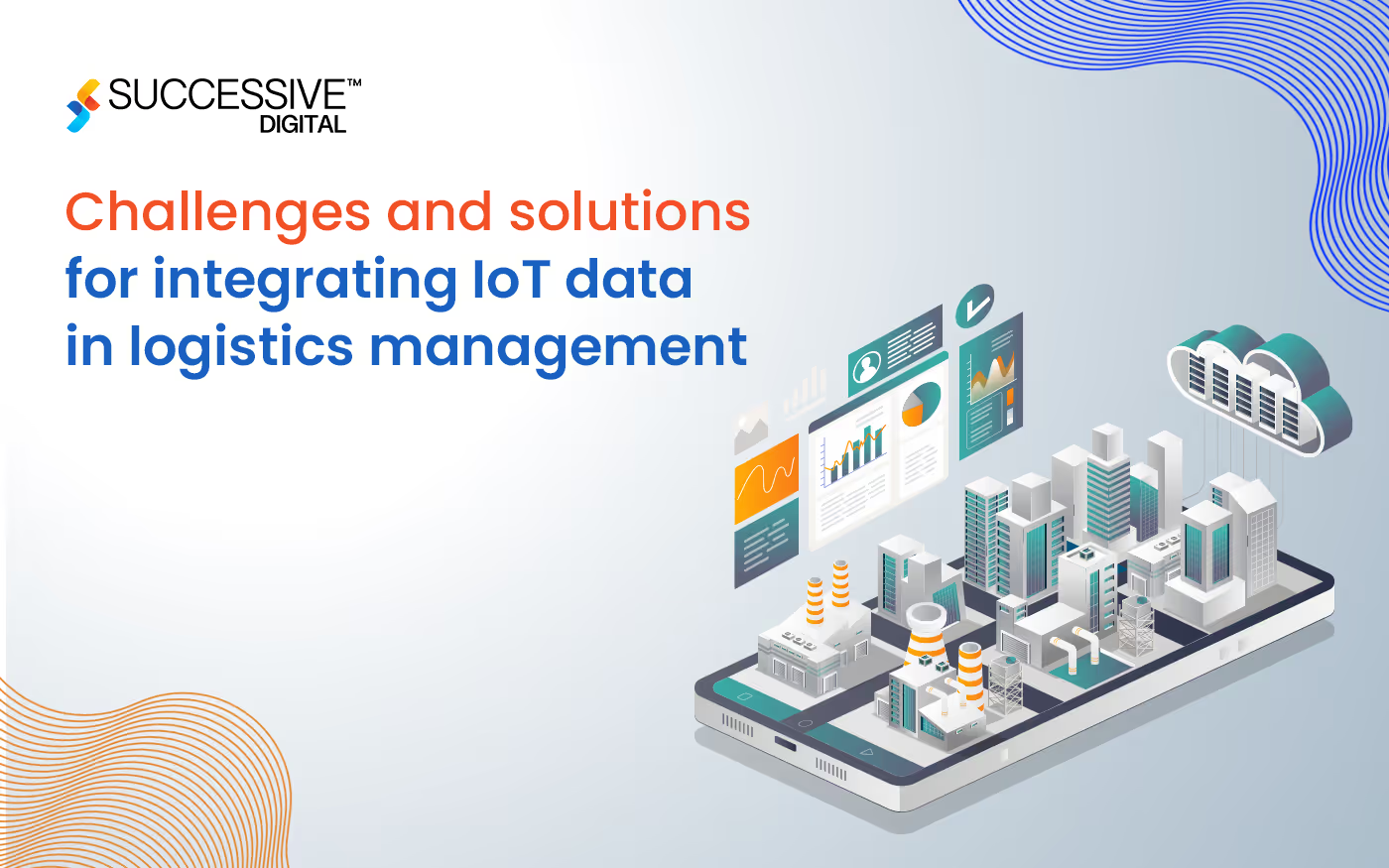Integrating Internet of Things (IoT) solutions for logistics management can revolutionize the enterprise by providing remarkable tiers of performance, visibility, and control over supply chain operations. IoT in logistics refers to the interconnected network of devices embedded with sensors, software, and other technology that allow them to collect and exchange data over the Internet. In logistics, this includes sensors on motors, programs, and warehouses that generate real-time information on an extensive range of parameters, including vicinity, temperature, humidity, and movement.Integrating this data into logistics control systems ensures multi-fold benefits, stepped-forward asset tracking, advanced predictive maintenance, optimized route planning, and better inventory control. However, the integration technique is fraught with challenges. The vast extent and variety of IoT data can be overwhelming, and ensuring data is in excellent state and accurate is vital for effective decision-making. Additionally, interoperability problems arise from using different data exchange protocols and requirements across devices. IoT data security in logistics and privacy concerns, scalability troubles, real-time data processing requirements, and the cost associated with IoT implementation further complicate the integration method. This blog extensively explores these challenges and gives technical solutions to address them, aiming to provide a complete understanding of how to combine IoT information into logistics control successfully.
Challenges of Integrating IoT Data in Logistics Management

Data Volume and Variety
The sheer extent and style of data IoT solutions for logistics generate can be overwhelming. Sensors on motors, applications, and warehouses produce large quantities of data in numerous codecs, along with temperature, humidity, region, and motion. Managing this data successfully requires robust storage, processing, and analysis talents.
Data Quality and Accuracy
Ensuring the accuracy of IoT data is crucial for dependable logistics management. Only accurate or complete data can extend better decision-making, eliminate inefficiencies, and reduce cost. Factors that include sensor malfunctions, calibration mistakes, and data transmission problems can compromise data quality.
Interoperability
IoT devices and systems regularly use specific conversation protocols and requirements, developing interoperability in challenging situations. Integrating data from diverse IoT devices into a unified logistics control setup calls for standardization and compatibility across devices and structures.
Security and Privacy
IoT devices are liable to cyber-attacks, which can cause data breaches and unauthorized admission to sensitive statistics. Ensuring IoT data security in logistics is critical to guard against threats and hold trust among all stakeholders.
Scalability
As the number of IoT devices in logistics will increase, so will the need for smart logistics solutions that could handle evolving data volumes and processing requirements. Scalability challenges can hinder the ability to enlarge IoT integration across logistics operations.
Real-time Data Processing
Logistics management frequently requires real-time data to make well-timed decisions and optimize operations. Processing and reading IoT data in real-time poses significant technical challenges, which include latency, computational energy, and network bandwidth.
Cost
Implementing IoT in logistics involves enormous capital, such as hardware, software, infrastructure, and maintenance. Balancing the cost of IoT integration with the potential blessings is a crucial mission for logistics companies.
Solutions for Integrating IoT Data in Logistics Management
- Advanced-Data Management Systems
For logistics companies, the ability to handle the volume and type of IoT data is crucial. By implementing advanced data management systems and smart logistics solutions, businesses can efficiently store and process large datasets. These systems, which support technologies like Apache Hadoop and Apache Spark, are designed to handle massive data technologies, including distributed storage and parallel processing, with efficiency and accuracy.
- Data Cleaning and Validation Techniques
Data accuracy can be achieved via best-in-class data cleaning and validation strategies. Implementing computerized approaches to locate and correct errors, clear out noise, and validate data contrary to predefined policies can improve data reliability. Machine learning (ML) algorithms can also be employed to discover patterns and anomalies in IoT data, improving quality.
.avif)










.jpg)









